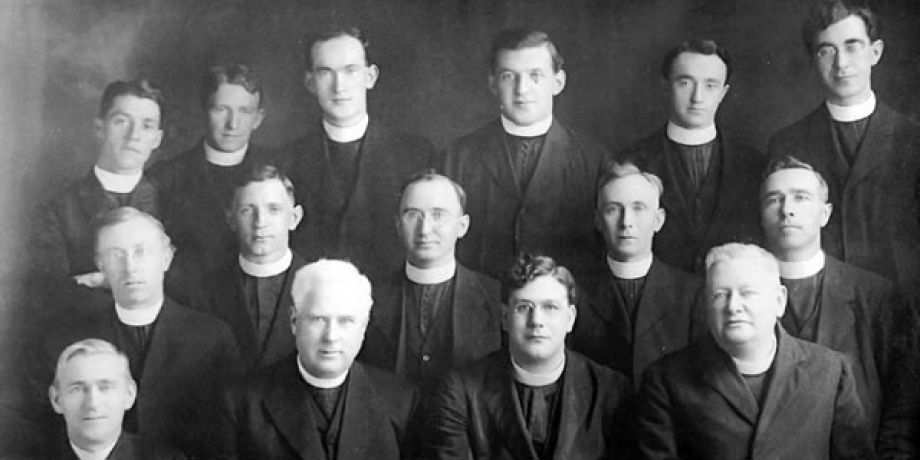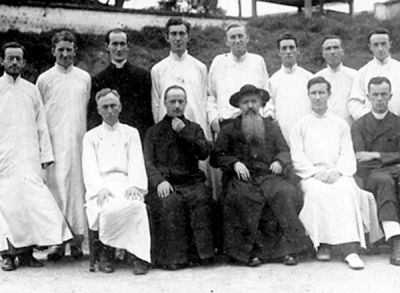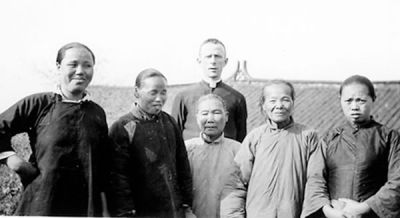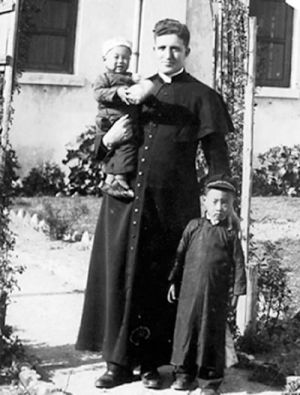
New Ways to Live in China
In 1954 Fr. Edward MacElroy became the last Columban of that era to leave China. His departure from China marked the end of a chapter of Columban history that had begun in 1920 with the arrival of a young, energetic group of missionaries who were committed to sharing the message of Christ with people in this vast land. Fr. MacElroy's lonely departure meant that our founding mission became a place where Columbans no longer had a presence. A cloud of uncertainty loomed on the horizon. Nobody could predict what might happen in China during the subsequent years.

In spite of the uncertainty, within four years the leadership team of the Columbans made an important decision about China. Superior General Fr. Tim Connolly and his team decided that it would be important for Columbans to have a young person who could speak Chinese as well as understand Chinese history and culture. They made this decision not knowing if it would ever be possible for Columbans to live in China again.
Fr. Edward Kelly, a newly ordained Columban of just 24 years of age, was appointed to study Chinese language and culture. He began his studies at Seton Hall University, New Jersey, in 1960. Ten years later he received a Ph.D. in advanced Chinese studies from Columbia University. In the years that followed he had his eyes focused on China. The country eventually became more open to visitors. In the 1980s he was a regular visitor to China and become a reliable link as the Church in China sought to rebuild its connections with the universal Church. The cloud of uncertainty was gradually lifting. Fr. Edward was well placed to build up trust with people in the Church in China as a new dawn appeared.

His unexpected death due to leukemia in 1994 was another setback for the Columban presence in China. However, the friendships and trust that he had established among people in China have proved crucial for what has developed over the past 30 years. A steady Columban presence was established in China, most of it based upon the early efforts of Fr. Kelly. During the past 30 years, Columbans initially lived in China as teachers of English in universities, a setting that gave us excellent contact with young Chinese people. It has also been possible for Columbans to facilitate the education of Chinese priests, Sisters and lay people in other countries. Some Columbans living in China now lead retreats for Chinese priests and Sisters as well as giving spiritual direction in two seminaries. Ministry to a small number of people who have special needs has been taking place for the past ten years. The arrival of three Columban lay missionaries to China in 2015 has enriched our missionary presence in a new way.
These gradual developments reflect many of the changes that have happened in Chinese society over the past 40 years. In China the deep faith of the Catholic people is something that we continually admire. They have seen the Church go through cycles of change that would challenge the faith of the most committed believers. In wider Chinese society there is now a growing level of interest about Christianity.
In 2007, Pope Benedict XVI wrote an important letter to the Catholics in China. The tender care he expressed for the Church in China was shown in the opening lines of that letter when he wrote: "You know well how much you are present in my heart and in my daily prayer and how deep is the relationship of communion that unites us spiritually."

The emphasis on unity by Pope Benedict is key to understanding the current relationship of the Church in China with the universal Church. The Catholics in China wish to increase their expression of unity with the universal Church. This is seen each year by the growing number of Chinese Catholics who visit Rome, the Holy Land and Lourdes. This commitment to unity is also felt by Columbans who live in China as we experience a warm welcome from the Catholic communities. In many ways it feels that we have returned home to the country where the first group of Columbans arrived in 1920.
Cycles of history have many layers. In 1948 Columban Bishop Edward Galvin invited Cardinal Spellman of New York to visit Hanyang Diocese. Bishop Galvin's hosting of the Cardinal Spellman's visit highlighted the importance of the universal Church. Accompanying the cardinal in 1948 was Archbishop Gerald Bergin of Omaha. The Archdiocese of Omaha has a special place in the life of Columbans because it has been the location of our headquarters since our presence in the U.S. was established.
In 2016 the Columbans invited Archbishop George Lucas of Omaha to visit China. His two-week visit to China was another opportunity to highlight the importance of the universal Church, reminding us that we belong to a Church that bridges borders of territory as well as bridging phases of history.
The Columban missionary presence in China is quite different now compared to the early years of our history. If Fr. MacElroy and his companions were to return to see what is happening now in China, they would probably be surprised by what they would see. However, they would surely approve of the way Columbans have found new ways to live in China that communicate the universal Church's hopes for the Church in China as well as the universal Church's hopes for all the people of China.
As mentioned by Columban Fr. Richard Ranaghan as he contemplated on the millions of Chinese people in his 1936 documentary film, "Cross and Dragon," all these people are "created in the image and likeness of God." It is among these millions of Chionese people that Columbans continue to preach the message of Christ 100 years after our foundation.
Columban Fr. Dan Troy lives and works in China.